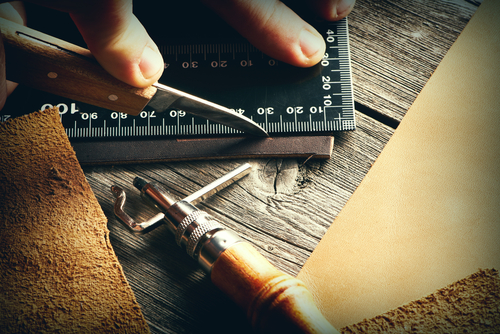According to the latest Current Population Survey from the Census Bureau, the proportion of Americans living alone has grown steadily since the 1920’s, increasing from about 5 percent to 27 percent in 2013.
As we transition into our later years, boredom and loneliness can set in for those of us whose homes have become empty nests. Indulging in craft activities can be immensely beneficial as craft is the language of material-making and can act as the building block of creativity.
There’s more to craft than simply creative expression. From embroidery and jewelry-making to knitting and pottery, the design and the creation process in these craft activities comes with a plethora of benefits. Immersing ourselves in hobbies like crafting stimulates cognitive functions and can help us unearth hidden talents as we lose track of time.
Have a look at these four prominent benefits of craft activities.
 1.Sense of Fulfillment and Emotional Well-Being
1.Sense of Fulfillment and Emotional Well-Being
Crafting is all about creating new things and can helps give us a sense of accomplishment especially after we enter retirement and exit the everyday workplace.
In fact, according to a study conducted by the University of Glasgow in 2011, arts and crafts help improve emotional well-being to an extent that more active pursuits such as sports cannot. Moreover, according to experts, crafting can help those of us who suffer from anxiety, depression, or chronic pain.
Scientific studies indicate that when involved in creative projects, the human brain releases dopamine – a natural antidepressant. Activities such as beading don’t require a lot of assistance or initial knowledge, therefore they act as great stress eliminators and bring about a natural, non-medicinal, feel-good high.
2.Self-Expression and Growth
Pottery, jewelry-making, and mask-making are just a few of the activities that help us exercise our creative muscles and engage in self-expression. These activities can enable us to express ourselves, giving wings to our imagination and thereby exercising our cognitive capabilities.

3.Mental Stimulation
Many craft activities require us to solve mathematical problems in the process of transforming raw materials into thoughtful, practical pieces of art. The mental stimulation provided by sequencing keeps our brains sharp and can prevent physical and mental deterioration.
Designing mosaics featuring geometric shapes with colored paper, tiles, and other materials offers several benefits especially for those of us who have been diagnosed with dementia. Similarly, knitting and other forms of textile crafting such as sewing, weaving and crocheting have offer similar benefits as meditation– with the added bonus of producing a piece of art from nothing!
 4.Other Major Benefits
4.Other Major Benefits
- Craft activities can be relaxing as well as therapeutic. They can help us understand the world we live in by teaching us more about ourselves and bring about positive changes in our emotional and behavioral patterns.
- Painting, drawing, sketching, and other fine arts help to improve our fine motor coordination.
- Participating in group craft activities can help enlarge our support system and teach us tolerance while reinforcing communication skills with both our peers and younger generations.
- Most importantly, indulging in creative pursuits can help break the monotony of our day-to-day routines, alleviate boredom, boost our self-esteem, and help us foster a new found sense of purpose.
 Craft activities can be both relaxing and rewarding allowing us to stimulate and entertain ourselves as we reach retirement age. Partaking in craft activities will not only stimulate brain cell activity, but provide us with a better quality of life from aiding our emotional well-being by giving us an outlet to channel unexpressed emotions. Arts and crafts can help hone our artistic skills, but also provide us with a means to spend quality time with ourselves and others.
Craft activities can be both relaxing and rewarding allowing us to stimulate and entertain ourselves as we reach retirement age. Partaking in craft activities will not only stimulate brain cell activity, but provide us with a better quality of life from aiding our emotional well-being by giving us an outlet to channel unexpressed emotions. Arts and crafts can help hone our artistic skills, but also provide us with a means to spend quality time with ourselves and others.









